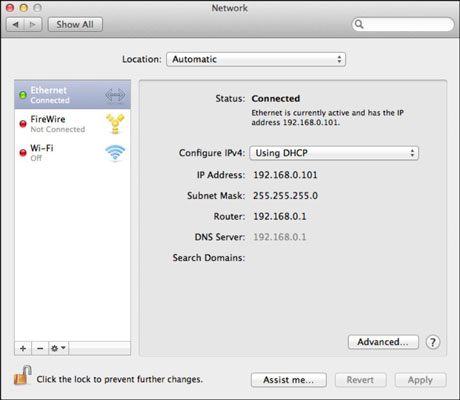

- #Get internet for one month on my mac serial#
- #Get internet for one month on my mac software#
- #Get internet for one month on my mac Pc#
- #Get internet for one month on my mac plus#
- #Get internet for one month on my mac zip#
I tried going down the avenue of 100 MB ZIP disks, since ZIP drives were made in both USB and SCSI-1 versions.
#Get internet for one month on my mac Pc#
Now, you might be wondering, “Wait, how did you get all of that abandonware on there in the first place?” Good question! The Mac’s floppy drive was old enough to be fundamentally incompatible with PC drives, and I didn’t have any floppy drives in any of my modern computers anyway.
#Get internet for one month on my mac serial#
The mess in the upper right is a level shifter, a a null modem, a DB-9 to DB-25 adapter, and a serial cable.
#Get internet for one month on my mac plus#
Since serial I/O on the Mac Plus was processor-intensive, throughput was limited to about 19 kbits/s, but 19 was a lot higher than 0.Ī Raspberry Pi doing the heavy lifting for the computer that’s tens of thousands of times slower. After a bit of tinkering with the configuration, I was able to get the MacTCP to talk to MacPPP, MacPPP to talk to SLiRP, SLiRP to use the Ethernet connection, and so on through my router and out to the Internet. Documentation for the combination of MacTCP, MacPPP, and SLiRP was, surprisingly, still available.
#Get internet for one month on my mac software#
On the software side, I scrounged around and after several failed attempts found a PPP client that would run on the Plus and a super-simple PPP server called SLiRP for the Pi. Using a level shifter and a variety of old adapters, I managed to get a serial cable working between the Pi and the Mac. I set up my Raspberry Pi and ran some Cat-5 to it from the router. I thought about the problem for a while, and it occurred to me that I could channel the early days again: I could use the serial port and PPP or SLIP to bridge to the outside world. A couple of companies made SCSI-to-Ethernet adapters about 15 years ago, but those were rare and expensive. The Mac Plus didn’t have an Ethernet port, and things like WiFi were years from being invented when it was manufactured. Getting the Mac physically hooked to the network was a bigger challenge. It didn’t support niceties like DHCP, but MacWeb was happy to use it, and it installed without problems, so there was the TCP/IP stack. Likewise, MacTCP existed in a version just barely able to run on System 7.0.

The stress of current after years of disuse had proved too much for one of the filter caps in the external drive’s power supply.Ī whole 4 MB of RAM to play with! Good thing, because MacWeb required 2 MB. It didn’t take much sniffing to find the source of the acrid odor: the external hard drive. Panicked, I slammed the power switches off and pulled the plugs. I was far down nostalgia lane playing a game of Glider when all of a sudden there was a loud *POP* and the smell of smoke. Sure, the hard drive gave a groan of protest when it first spun up, but that quieted down, and everything seemed stable with the data intact. I plugged it and its external hard drive in, flipped the power switches, and watched the happy Mac glow to life on the tiny CRT. It arrived in good condition, having been stored undisturbed in her basement since the mid-1990s. How hard could it be to right that wrong?Įverything went smoothly at first. It was always just a dumb terminal on the ‘net, never a full-fledged member. (There’s nothing quite like erotic literature at 2400 bps when you’re 13 years old.) What it never did was run a TCP/IP stack of its own.

Yes, in a certain sense, my Mac has already been on the Internet, first via BBSes and later via Lynx through a dial-up shell sessions. It introduced me to C, hard drives, modems, and the Internet. Still, that Mac Plus was where I cut my computing teeth as a child. My current desktop PC is on the order of 200,000 times faster-not even including the GPU. The specs pale in comparison to even my Kindle: 8 MHz CPU, 4 MB RAM, 50 MB hard drive, and 512 x 384 pixel black-and-white screen. Some applications are not available in all areas.It’s a lowly machine, my Mac. Title and app availability are subject to change. Not all content is available in 4K or 4K HDR. Restrictions and other terms apply.ġ Dolby Atmos features require Dolby Atmos-capable devices and may not be available for all titles and languages.Ģ Subscription may be required to access some content. Plan automatically renews until cancelled. Offer good for 3 months after eligible device activation.

Eligible devices activated Jor later will qualify for offers of 3 months free Apple TV+. Remaining balance on financed device(s) due immediately upon disconnect of Optimum service. Monthly installment payment due with Optimum service payment. Financing plan: zero down /zero interest /$10 per mo. Optimum account must be in good standing. Limited to 2 Apple TV purchases per account. *Apple TV available for purchase with Altice One video/internet service for $180 + tax.


 0 kommentar(er)
0 kommentar(er)
